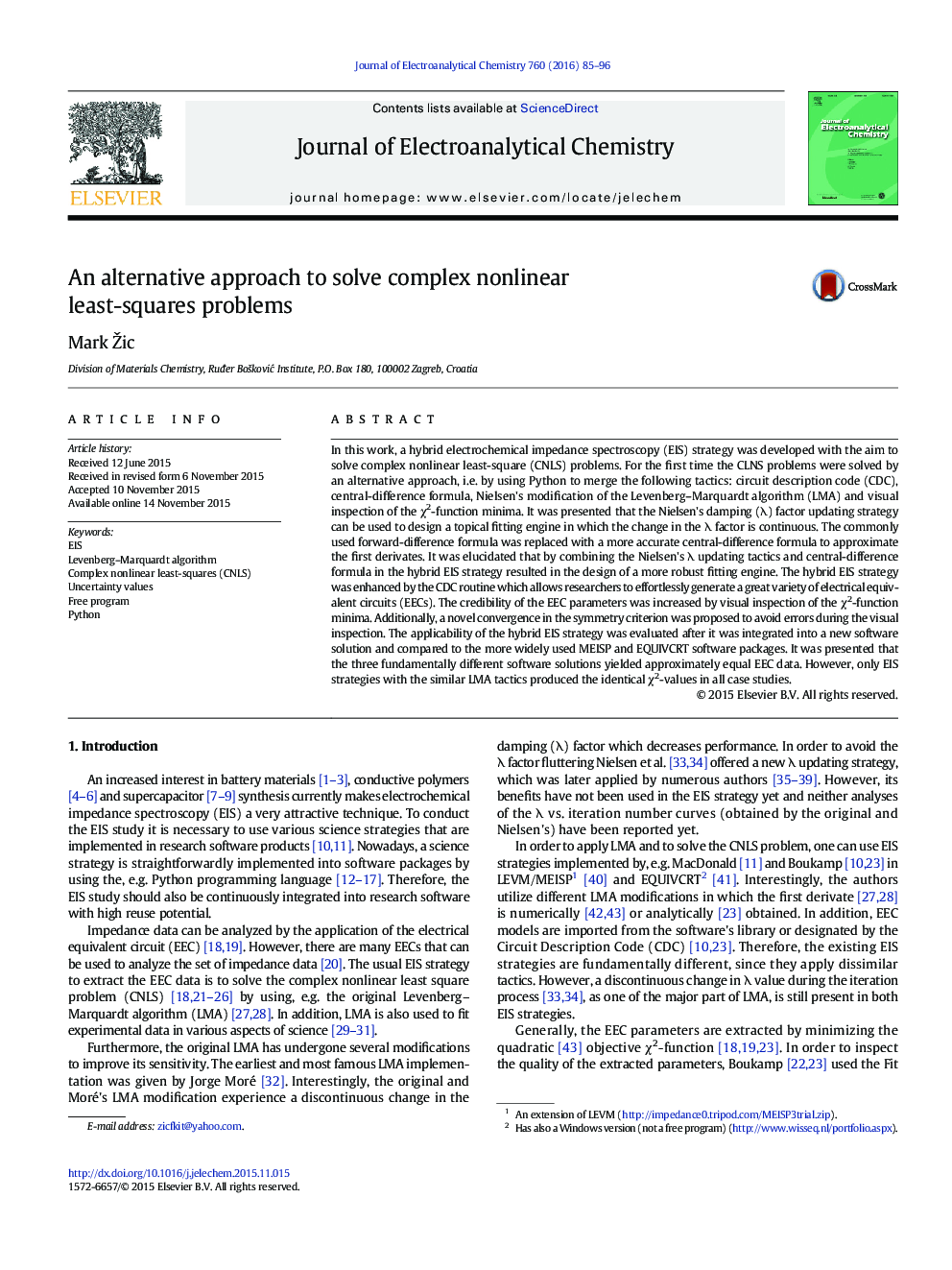| کد مقاله | کد نشریه | سال انتشار | مقاله انگلیسی | نسخه تمام متن |
|---|---|---|---|---|
| 217927 | 463174 | 2016 | 12 صفحه PDF | دانلود رایگان |
• A hybrid electrochemical impedance spectroscopy (EIS) strategy was proposed.
• The existing and a novel tactics were merged in the hybrid EIS strategy.
• Nielsen's λ updating strategy was used (first time) to design EIS fitting engine.
• The visual inspection of the χ2-function at the iteration's end was enabled.
• The hybrid strategy was deployed in research software using Python (the open source).
In this work, a hybrid electrochemical impedance spectroscopy (EIS) strategy was developed with the aim to solve complex nonlinear least-square (CNLS) problems. For the first time the CLNS problems were solved by an alternative approach, i.e. by using Python to merge the following tactics: circuit description code (CDC), central-difference formula, Nielsen's modification of the Levenberg–Marquardt algorithm (LMA) and visual inspection of the χ2-function minima. It was presented that the Nielsen's damping (λ) factor updating strategy can be used to design a topical fitting engine in which the change in the λ factor is continuous. The commonly used forward-difference formula was replaced with a more accurate central-difference formula to approximate the first derivates. It was elucidated that by combining the Nielsen's λ updating tactics and central-difference formula in the hybrid EIS strategy resulted in the design of a more robust fitting engine. The hybrid EIS strategy was enhanced by the CDC routine which allows researchers to effortlessly generate a great variety of electrical equivalent circuits (EECs). The credibility of the EEC parameters was increased by visual inspection of the χ2-function minima. Additionally, a novel convergence in the symmetry criterion was proposed to avoid errors during the visual inspection. The applicability of the hybrid EIS strategy was evaluated after it was integrated into a new software solution and compared to the more widely used MEISP and EQUIVCRT software packages. It was presented that the three fundamentally different software solutions yielded approximately equal EEC data. However, only EIS strategies with the similar LMA tactics produced the identical χ2-values in all case studies.
Figure optionsDownload as PowerPoint slide
Journal: Journal of Electroanalytical Chemistry - Volume 760, 1 January 2016, Pages 85–96
